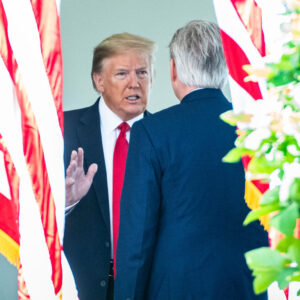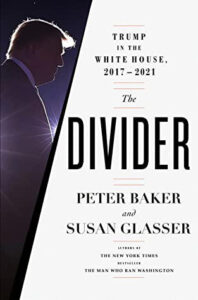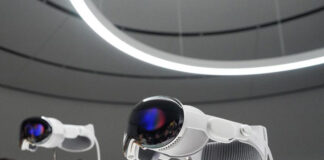SEPTEMBER 14, 2022

No president has ever been as obsessed with the media as Donald Trump. His top Twitter insult was “fake news,” which he never tired of directing at the “failing New York Times.” So consumed was he by his hatred of The Washington Post and its owner, Jeff Bezos, that he sought to deny Amazon federal contracts and access to the U.S. Postal Service. Trump tried for months to kill a merger that involved another detested media company, CNN, and even encouraged Rupert Murdoch to buy CNN’s parent company (at the fire-sale price his efforts had produced).
The obsession was mutual — and highly profitable, for the targets of Trump’s ire and admiration alike. Trump threw invective at mainstream media outlets, but readers, subscribers, viewers and advertisers all threw dollars at them. Digital subscriptions to the Times and The Post soared during Trump’s presidency. The combined viewership of CNN, MSNBC and Fox more than doubled between 2015 and 2020. The biggest beneficiary, of course, was Murdoch’s conservative media empire. While the bottom feeders of right-wing media feasted on the detritus, Fox News became the closest thing to state TV the United States has ever had. In a single year, Trump tweeted about stories on its shows 657 times.
This last gem comes from “The Divider: Trump in the White House, 2017-2021” by Peter Baker and Susan Glasser (he of the Times, she of the New Yorker). Given Trump’s decision to stuff his post-presidency residence with classified documents, not to mention the potential for a 2024 run, the book is exquisitely timed. A well-paced and engagingly written narrative, “The Divider” shows off the best of big-resource journalism in the Trump era. Yet it also makes vivid some of the shortcomings of the industry that Trump repeatedly exploited.

A new Trump book is worth reading only if its argument or its revelations break new ground. The thesis of Baker and Glasser’s book is unoriginal, if accurate: Trump posed a unique threat to American democracy. The threat was lessened by his ineptitude, the incompetence of many he relied on and the resistance of many others — some principled, some partisan, some self-preserving. But the threat was magnified by the anti-democratic swing of the GOP he exploited, the creakiness of the constitutional order he challenged and his increasing mastery of the loyalty-test politics he excelled at.
Trump’s assault on American democracy was also assisted, let us be honest, by the American media — and not just the right-wing sources that glorified his presidency and radicalized his voters. Trump would not have gotten into the White House at all were it not for the mainstream media routines that made classified messages on Hillary Clinton’s private email server the biggest character issue of the campaign. (The irony is too thick to cut.)
Even after Trump took power, journalists struggled to restrain old instincts: to broadcast every tweet, to focus on political fluff rather than policy substance, to give “both sides” equal say. Only with time and increased understanding of Trump’s intentions did we see meatier investigations of his finances, policies and manipulations, and how they were abetted by his increasingly cultish party. Baker and Glasser compare Trump to the velociraptors in “Jurassic Park” that gradually figure out how to corner their new human prey (the prey in this case being American democracy). The metaphor is apt for journalists as well. Under unprecedented attack, those covering Trump had to learn while hunting.
“The Divider” is, in many ways, a marker of how much journalism has adapted. It displays some of the old instincts: Notwithstanding its more than 650 pages of text, it has little to say about the policies pursued by Trump and his fellow Republicans, or about the political organizations that backed or battled his party or lobbied Washington during his presidency (the National Rifle Association, for example, is not mentioned once). Many anecdotes and backstories seem to be there only because Baker and Glasser know them. Still, the book is the most comprehensive and detailed account of the Trump presidency yet published, and it would not have been possible, as Baker and Glasser write in their acknowledgments, without the diligence and fortitude of their colleagues in the press corps “who worked to cover the Trump administration while being denigrated as ‘enemies of the people.’”
To this rich factual context, Baker and Glasser add fresh and frequently alarming stories, based in part on more than 300 interviews they conducted. If their argument treads familiar Trump-book ground, “The Divider” delivers new revelations aplenty. The biggest of the scoops provide vivid new details about Trump’s ever more dictatorial behavior. In a chapter titled “My Generals,” Baker and Glasser describe how Trump was so frustrated with his military commanders for refusing his various strong-arm orders that he asked Chief of Staff (and retired general) John Kelly why his generals couldn’t be more like Adolf Hitler’s during World War II. When Kelly retorted that those generals had tried to kill Hitler, Trump replied, “No, no, no, they were totally loyal to him” — as if that was what should be remembered about the Nazi regime.
As explosive as this new quote is, we’ve long known how Trump feels about Hitler-like power. Yet Baker and Glasser uncover many other episodes that make clear — well before Jan. 6, 2021 — how shockingly far he was willing to go to stay in office. The authors reveal a set of exchanges between Trump and Attorney General William Barr that suggest the president was truly serious about his tweet threats to lock up election rival Joe Biden. “That pissed me off,” Barr tells the authors, which is a bit like finally getting upset with your juvenile-delinquent kid when he disables the brakes in his teacher’s car.
Another revealing story concerns Trump’s strenuous attempts to get the Food and Drug Administration to approve a coronavirus vaccine before Election Day. The scale of the “bombardment” was unprecedented — meetings with and repeated phone calls from the president and his underlings, who accused the independent agency of “sabotaging the election effort.” Trump failed, of course, but not without damaging public confidence in the vaccine. If he hadn’t, he might still be president.
The fact that Trump ultimately lost makes it easy to look back with confidence that everything turned out as it should have. But, as Baker and Glasser say, recycling a quote about Waterloo used by Kelly, “it was a close-run thing.”
Reading that line, one can’t help but wonder if it would have been less close-run if Baker and Glasser had shared all the troubling facts they knew before the 2020 election. When a New Yorker piece based on “My Generals” ran in mid-August, there was criticism that the authors had kept some of the most explosive disclosures under wraps to make “The Divider” more newsworthy and potentially lucrative.
Evaluating this charge is hard, because Baker and Glasser rarely cite their own interviews and never say when any of them were conducted. So it’s not clear what information they could have made public before November 2020. But the concern is certainly valid. Journalism is a business, and journalists need to make a living. But they also have a responsibility to inform citizens before those citizens enter the election booth, and it’s deeply troubling when they seem to be holding back relevant information for commercial reasons.
Good journalism is indispensable in a democracy, and it needs defense now more than ever. “The Divider,” with its devastating portrait of a demagogue who still dominates his party, shows why. It also suggests that journalism needs to have a serious conversation about its role and responsibilities in today’s fraught politics. In this all-hands-on-deck moment, we need journalists focused on the horizon and shouting quickly and clearly about icebergs ahead.










































































































